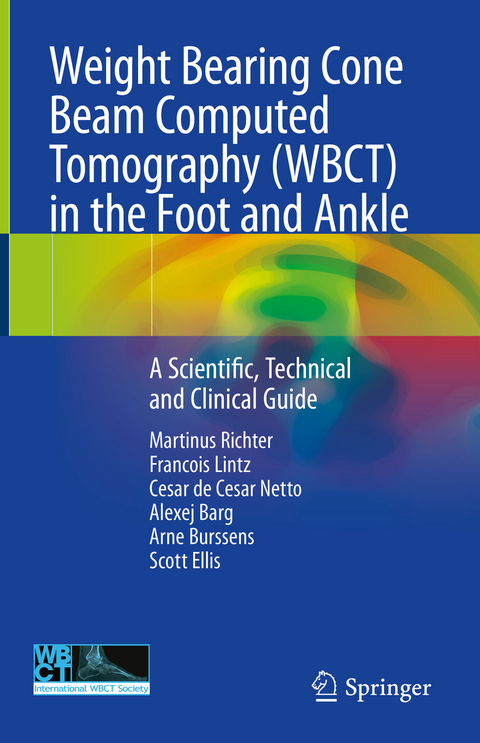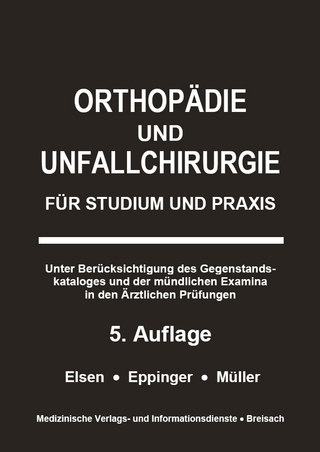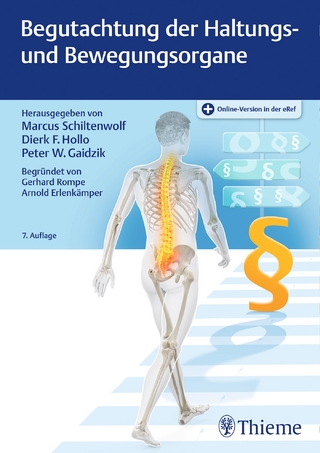
Weight Bearing Cone Beam Computed Tomography (WBCT) in the Foot and Ankle
Springer International Publishing (Verlag)
978-3-030-31948-9 (ISBN)
Part One describes the history of the development of, and need for, WBCT as an imaging option and a scientific overview of the procedure. Part Two is an exhaustive scientific background, comprised of 16 landmark studies, describing its advantages for selected foot and ankle injuries and deformities (both congenital and acquired). With this science as context, Part Three includes chapters on the technical aspects and necessary background for WBCT, introduces the different devices, and provides insight into the actual measurement possibilities, including the initial software solutions for automatic measurements. Current clinical applications via case material are illustrated in atlas-like fashion in the next chapter, and a final chapter on future developments explores further applications of WBCT, such as dynamic scans and measurements or hologram-like visualization.
The first book publication of its kind on this exciting and developing imaging modality, Weight Bearing Cone Beam Computed Tomography (WBCT) in the Foot and Ankle will be an excellent resource for orthopedic and foot and ankle surgeons, radiologists, and allied medical professionals working in this clinical area.
Martinus Richter, MD, PhD, Department of Foot and Ankle Surgery, Hospital Rummelsberg, Schwarzenbruck, Germany Francois Lintz, MD, FEBOT, Clinique de l'Union, Foot and Ankle Surgery Centre, Toulouse, France Cesar de Cesar Netto, MD, PhD, Department of Orthopedics and Rehabilitation, University of Iowa Carver College of Medicine, Iowa City, IA, USA Alexej Barg, MD, Department of Orthopedics, University of Utah, Salt Lake City, UT, USA Arne Burssens, MD, Department of Orthopedics and Traumatology, University Hospital Ghent, Ghent, Belgium Scott Ellis, MD, Department of Orthopedic Surgery, Hospital for Special Surgery, New York, NY, USA
Part I: History and Scientific Overview of Weight Bearing Cone Beam Computed Tomography.- Background of Weight Bearing Cone Beam Computed Tomography.- Scientific Overview of Weight Bearing Cone Beam Computed Tomography.- Part II: Scientific Background of Weight Bearing Cone Beam Computed Tomography.- Weight Bearing CT Allows for More Accurate Bone Position (Angle) Measurement than Radiographs or CT.- Combination of Weight Bearing CT (WBCT) with Pedography Shows No Statistical Correlation of Bone Position with Force/Pressure Distribution.- Combination of Weight Bearing CT (WBCT) with Pedography Shows Relationship between Anatomy Based Foot Center (FC) and Force/Pressure Based Center of Gravity (COG).- A New Concept of 3D Biometrics for Hindfoot Alignment Using Weight Bearing CT.- 3D Biometrics for Hindfoot Alignment Using Weight Bearing Computed Tomography: A Prospective Assessment of 249 Feet.- Relationship between Chronic Lateral Ankle Instability and HindfootVarus Using Weight Bearing Cone Beam Computed Tomography: A Retrospective Study.- Normal Hindfoot Alignment Assessed by Weight Bearing CT: Presence of a Constitutional Valgus?- Reliability and Correlation Analysis of Computed Methods to Convert Conventional 2D Radiological Hindfoot Measurements to 3D Equivalents Using Weight Bearing CT.- The Hind- and Midfoot Alignment Analyzed after a Medializing Calcaneal Osteotomy Using a 3D Weight Bearing CT.- Is Load Application Necessary When Using Computed Tomography Scans to Diagnose Syndesmotic Injuries? A Cadaver Study.- Use of Weight Bearing Computed Tomography in Subtalar Joint Instability: A Cadaver Study.- Is Torque Application Necessary When Using Computed Tomography Scans to Diagnose Syndesmotic Injuries? A Cadaver Study.- Flexible Adult Acquired Flatfoot Deformity: Comparison Between Weight Bearing and Non-Weight Bearing Measurements Using Cone Beam Computed Tomography.- Hindfoot Alignment of Adult Acquired Flatfoot Deformity: A Comparison of Clinical Assessment and Weight Bearing Cone Beam CT Examinations.- Influence of Investigator Experience on Reliability of Adult Acquired Flatfoot Deformity Measurements Using Weight Bearing Computed Tomography.- Results of More Than 11,000 Scans with Weight Bearing CT: Impact on Costs, Radiation Exposure and Procedure Time.- Part III: Technical Guide to Weight Bearing Cone Beam Computed Tomography.- Technology of Weight Bearing Cone Beam Computed Tomography.- Weight Bearing Computed Tomography Devices.- Measurements in Weight Bearing Computed Tomography.- Clinical Examples of Weight Bearing Computed Tomography.- Future Developments in Weight Bearing Computed Tomography.
| Erscheinungsdatum | 22.01.2020 |
|---|---|
| Zusatzinfo | XIV, 313 p. 113 illus., 96 illus. in color. |
| Verlagsort | Cham |
| Sprache | englisch |
| Maße | 155 x 235 mm |
| Gewicht | 792 g |
| Themenwelt | Medizinische Fachgebiete ► Chirurgie ► Unfallchirurgie / Orthopädie |
| Medizinische Fachgebiete ► Radiologie / Bildgebende Verfahren ► Radiologie | |
| Schlagworte | 3D biometrics • 3d imaging • Acquired flatfoot deformity • Foot and ankle radiology • Hindfoot alignment • Midfoot alignment • PedCAT • Subtalar joint instability • WBCT • Weight bearing cone beam computed tomography • Weight bearing measurement |
| ISBN-10 | 3-030-31948-2 / 3030319482 |
| ISBN-13 | 978-3-030-31948-9 / 9783030319489 |
| Zustand | Neuware |
| Haben Sie eine Frage zum Produkt? |
aus dem Bereich


